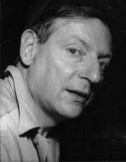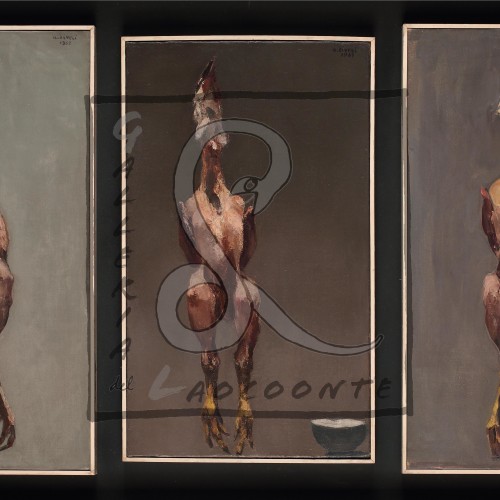Alberto Ziveri
Alberto Ziveri

Alberto Ziveri was born in Rome in 1908.
Between 1921 and 1929 he attended ‘il Liceo Artistico’ and ‘la Scuola Serale di Arti Ornamentali’, both in San Giacomo. He also studied sculpture, which was very important in his artistic development as it helped him to gain a better sense of volume and light. His work on sculpture took place in the studio of Giulio Bargellini, where he forged a friendship with Guglielmo Janni, a painter of great and refined culture (great-grandson of Giuseppe Gioachino Belli), who led him down the road of painting. In 1928 he made his debut with some drawings for the XCIV ‘Esposizione della Società Amatori e Cultori di Belle Arti’. Between 1928 and 1930 he shared his time between Parma (the hometown of his father’s family), where he studied with Andrea Mantegna, Correggio and Parmigianino, and Milan where he carried out his military service in the regiment of the Sharpshooters.
In 1931, whilst attending ‘la scuola Libera del Nudo’, he came to know the young sculptor Pericle Fazzini with whom he became best friends and rented a studio. At the beginning of the thirties he was part of a new generation of artists who, alongside Corrado Cagli, Renato Guttuso, Pericle Fazzini, Afro and Mirko Basaldella, gravitated around the gallery of Dario Sabatello. The young art dealers of the time showed great confidence in Ziveri and took a great chance in curating his first solo exhibition in 1933. It was extremely well received by the critics, and in 1935 it was included in the ‘Exhibition of Contemporary Italian Painting’ which, travelling to the United States, included such artists as Giorgio de Chirico, Gino Severini, Giorgio Morandi and Mario Sironi. From this moment onwards he took part in all the most important exhibitions in Italy and abroad, and in 1933 he created a mural in an interior of ‘Casa di Campagna per un uomo di studio’, created by Roman architects such as Luigi Moretti, for the V Milan Triennale. In 1935 at the second Rome Quadriennale he exhibited alongside the Italian founders of tonalism Giuseppe Capogrossi and Emanuele Cavalli, where he was noted by the critics as one of the revelations of the exhibition. The culmination of his tonal phase was to be the 1936 exhibition in ‘Galleria della Cometa’, founded in Rome by Anna Laetitia Pecci Blunt, a collector of his works. In 1937 and 1938 he visited the Netherlands, France, Belgium and Switzerland, where he examined the painting of Gustave Courbet, Eugène Delacroix, Rembrandt and Jan Vermeer and became aware of their different styles. In 1938 at the twenty-first Venice Biennale Ziveri made his debut realist showing, which helped to open a new phase of style within the Roman art world. From now on, as stated by the artist himself in his writings, realism was his moral compass, with torment, violence and solitude evident in his works of the time. This was how the intense self-portraits, portraits of soldiers, meat markets and religious processions came into being. In 1943 he won a prize for painting at the IV Rome Quadriennale with one of his masterpieces, ‘Giuditta e Oloferne’. In 1946 he made his first personal exhibition at the Gallery of Rome, showing his new portfolio of works. In this gallery he also exhibited a large group of etchings, a technique that he had been learning since 1926. In 1952 the publisher Luigi De Luca dedicated his first monograph to him, with an essay by Leonardo Sinisgalli. Caught right in the middle of the war between formalism and realism, Ziveri chose the side of the latter, and at the 1956 XXVIII Venice Biennale, Roberto Longhi called him the greatest living Italian realist. This assertion was reconfirmed in 1964 when Ziveri presented his works in Rome at ‘Galleria La Nuova Pesa’. These works, almost all made between 1957 and 1964, show a new realistic phase where the conflict between romantic and classic appears to have been resolved. In 1983 D. Durbè, M. Fagiolo and V. Rivosecchi brought all of his etchings together in one volume. In 1984 the same critics created an anthology of his works which was consequently shown at the National Gallery of Modern Art, and in 1989 he won the Viareggio-Rèpaci prize. He died in Rome in 1990.



